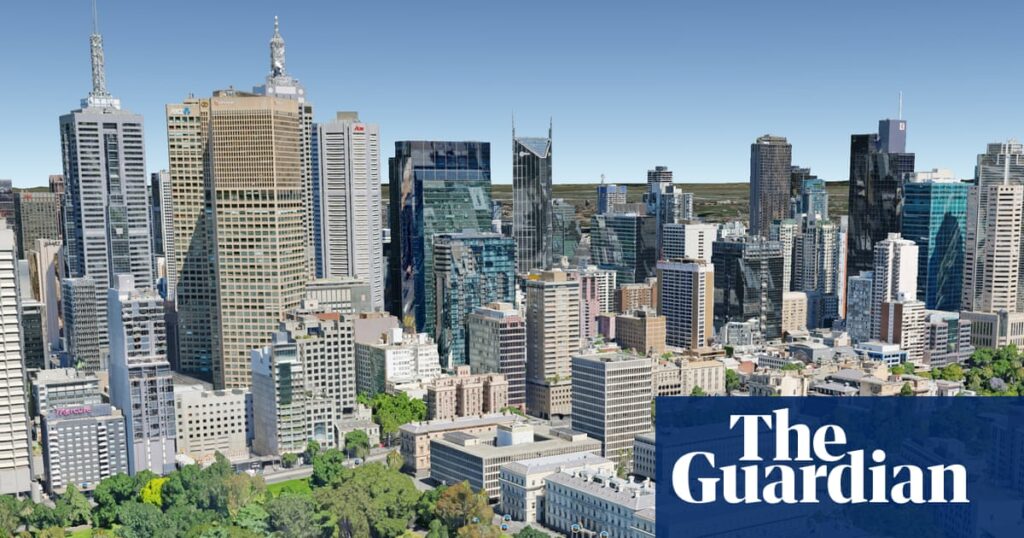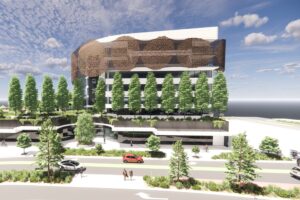
Two years ago, state and local governments in Australia championed the conversion of near-empty office buildings into much-needed apartments as a solution to the housing crisis. However, the anticipated transformation has not materialized. Despite increasing office vacancies and intensifying housing shortages, the momentum to repurpose these spaces has waned.
Since 2023, developers have not submitted any applications to convert offices into housing in central Melbourne, and only one successful application has been recorded in Sydney’s central business district (CBD), Australia’s most unaffordable city. The high costs of refitting office towers have deterred landlords, who prefer to keep their properties in the office market, hoping for a return of workers or government incentives to make conversions financially viable.
Challenges in Converting Office Spaces
A landmark 2023 study identified 86 office blocks in Melbourne ripe for redevelopment, estimating that converting just half could yield up to 12,000 apartments. The Victorian government pledged support for these conversions, but commercial landlords have been discouraged by the high conversion costs, as explained by Ingrid Bakker, principal at architecture firm Hassell.
“In Melbourne, where there are a lot of buildings that are sitting quite empty, we still haven’t really got that sort of traction yet,” Bakker says.
One office block owner opted to lease to new commercial tenants after Bakker’s team found that a refit would barely break even, with an estimated profit margin of only 0.05%.
“There aren’t any developers out there that go: ‘Oh yeah, that fits with my business plan, I want to make point-zero-something per cent profit,’” Bakker adds.
No applications have been made to create housing in any of the other 80-plus towers, let alone the rest of Melbourne’s 5 million square meters of CBD office space. Other landlords have refurbished existing offices, continued leasing to business tenants, or withdrawn properties from the market.
Costly Conversions and Regulatory Hurdles
Office vacancy rates have climbed since 2023, reaching a 30-year high of 15% in July, while only 1.47% of the nation’s rental housing stock is available for lease—a record low. In contrast, countries like the United States and the United Kingdom have eased planning rules to facilitate conversions, sometimes resulting in “slum-like” small flats in unsuitable buildings.
Australia has maintained strict regulations, making conversions more expensive than new constructions, according to Sara Wilkinson, a professor of sustainable property at the University of Technology Sydney.
“You might think because you’ve got the foundations, the walls, the roofs, the facades, it could be a fairly economical, fast way to get housing,” Wilkinson says. “But because of compliance with planning and building codes, it can be quite expensive, and you have to put a lot more … kitchens and bathrooms for each apartment.”
The sole successful conversion application in central Sydney over the past two years involves a century-old, eight-storey former warehouse in Ultimo, where the developer plans to install 156 apartments. Another project is under consideration, according to a City of Sydney spokesperson.
Success Stories and Government Support
Despite the challenges, there are some success stories that offer hope for future conversions. In Brisbane, a tower at 41 George Street is being transformed into student housing, with developers utilizing windowless office areas for gym, study, and cafeteria spaces, as noted by Andrew Purdon, a regional director at CBRE.
“Student accommodation drives a lot of revenue through the [smaller dorms’] floor area [and] has an advantage over other forms of residential,” Purdon says.
Government support has also facilitated individual projects. The City of Melbourne secured state funding to convert a warehouse into social housing, while a New South Wales government grant transformed a vacant office building in Penrith into temporary accommodation for at-risk youth. The Victorian and NSW governments remain interested in exploring housing options for empty offices.
However, industry expert Philip Oldfield argues that more incentives are needed to make conversions financially viable.
“If we want to increase the amount of office-to-residential conversions, we need to incentivise that, provide tax breaks or other mechanisms, to make it more financially viable to savvy developers,” Oldfield says.
In Adelaide, dedicated incentives for conversion projects have led to a wave of mini-conversions, with five new homes replacing unused office spaces and more on the way. The city council and state government have collaborated to fund and fast-track these projects, offering financial support for services and construction.
While Melbourne’s lord mayor, Nicholas Reece, has promised lower council rates, taller building heights, and application fee refunds, more comprehensive support is needed to revitalize the numerous empty office buildings. Bakker and her team at Hassell continue discussions with state and local governments, holding onto hope for future projects.







